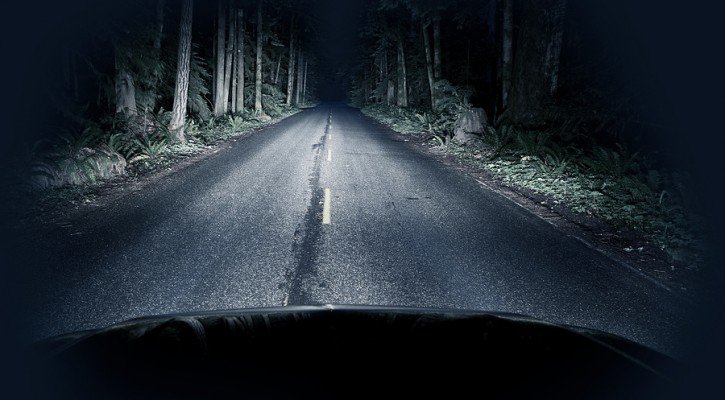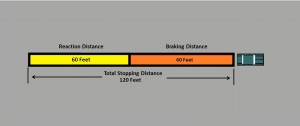Tag Archive: stopping distance

Ask The Driving School Instructor: Braking Distance VS Stopping Distance
December 3, 2014
Question: I’m studying for my driving exam and I’m confused about the difference between stopping distance and braking distance.
Answer: It can be a little confusing, I’ll try to sort it out for you.
If you encounter an emergency on the road requiring you to stop suddenly, there are two parts that make up the total stopping distance.
- Reaction distance
- Braking distance
When you’re in an emergency situation, it takes time to react to the emergency, to brake, and to finally bring your vehicle to a complete stop. Remember that your vehicle is traveling a surprisingly long distance every second. At 40 mph, your vehicle will travel approximately 60 feet per second and a lot can happen in that short amount of time.
Reaction time
The time it takes you to react and respond to an emergency can be broken down into three parts:
- Perception or awareness time
- Decision time
- Action time
Let’s look at each part by imagining a scenario that requires you to make a sudden stop. Let’s say that you are traveling at 40 mph when the driver of the car ahead of you suddenly applies his brakes.
Perception time
The perception or awareness time is how long it takes before you are even aware that the driver ahead is suddenly stopping. If you aren’t expecting an emergency, it will take time before you realize that the car ahead is suddenly braking
Decision time
Now that you’re aware of the emergency ahead, you have to decide what to do. Will you hit the brakes or swerve into another lane to go around? If you try to change lanes, is the lane clear or are there other vehicles that may be in the way? It takes time to decide what to do. In our emergency, let’s say that you decide to hit the brakes but that decision took time
Action time
Now that you’ve decided you’re going to brake, you have to move your foot from the gas pedal to the brake pedal and push it all the way down. That also ate up precious time.
For the average person, the total reaction time can take from three-quarters to a full second. At 40 mph, if your reaction time is one full second, you’ll have traveled almost 60 feet before applying the brakes.
Braking Distance
Now that you’ve applied the brakes, it still takes time to come to a complete stop. For an average car that weighs almost 3,000 pounds, that can take up to 60 feet.
Total stopping distance
So, the total stopping distance is made up of both the reaction distance plus the braking distance. Adding the two together means that, at 40 mph, it can take up to 120 feet before your vehicle will come to a complete stop. That’s why maintaining a safe following distance between you and the vehicle ahead is so important.
To test your reaction time, visit: How fast is your reaction time?

Ask The Driving School Instructor: Overdriving Your Headlights
September 2, 2014
Question: What do they mean when they talk about overdriving your headlights?
Answer: Overdriving your headlights means driving too fast to be able to stop in the distance lit by your headlights. Automobile headlights are only effective for a certain distance. On average, with low beam headlights, you can only spot objects in the road for a distance of about 160 feet in front of your vehicle. With high beams, you can see about 450 feet ahead. Those distances don’t take into account the age, visual abilities of the driver, or road conditions. Your headlights can’t light objects over hills, around curves, or dips in the road and they’re even less effective in rain, fog or snow. Continue Reading

